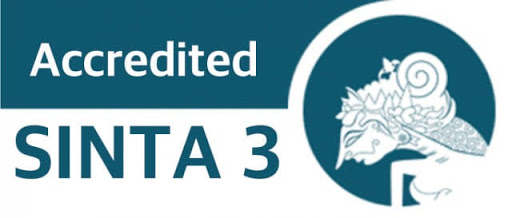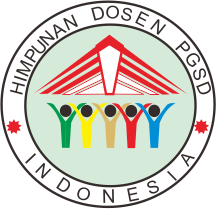The Effect of Interactive Engagement Strategy Using Quizizz on Students' Critical Thinking Ability on Chemical Bonding Material
Abstract
Keywords
References
Antwi, K. B., Osei, M. A., & Osei-Tutu, E. (2011). The impact of interactive engagement methods on students' academic achievement. Journal of Educational Research and Practice, 1(1), 45-56.
Arikunto, Suharsimi. (2012). Prosedur Penelitian.Jakarta: Rineka Cipta.
Ariyanti, M. (2017). Perbandingan keefektifan model project-based learning dan problem-based learning ditinjau dari ketercapaian tujuan pembelajaran. Jurnal Pendidikan Matematika Dan Sains, 5(1), 121800.
Ayodele, O. D. (2011). Effects of interactive engagement and analogy enhanced instructional strategies on the achievement and self-efficacy of senior secondary school chemistry students. Unpublished Doctoral Dissertation, University of Ibadan. Nigeria.
Dwijananti, R., & Yulianti, A. (2010). Critical thinking in the context of education: A review of the literature. Indonesian Journal of Education, 14(2), 123-135.
Jumini, S., Madnasri, S., Cahyono, E., & Parmin, P. (2022). Article Review: Integration of Science, Technology, Entrepreneurship in Learning Science through Bibliometric Analysis. Journal of Turkish Science Education, 19(4), 1237-1253.
Hake, R. R. (1998). Interactive-engagement vs traditional methods: A six-thousand-student survey of mechanics test data for introductory physics courses. American Journal of Physics, 66(1), 64-74. https://doi.org/10.1119/1.18863
Hamari, J., Koivisto, J., & Sarsa, H. (2016). Does Gamification Work?--A Literature Review of Empirical Studies on
Gamification. 2014 47th Hawaii International Conference on System Sciences, 3025-3034.
Karpinski, A. C., & Duberstein, A. (2017). The Effect of Gamification on Student Engagement and Learning Outcomes. Journal of Educational Technology Systems, 45(2), 197-215.
Khan, A., Ali, M., & Khan, A. (2020). Impact of Gamification on Students' Engagement: A Study with Quizizz. International Journal of Educational Technology in Higher Education, 17(1), 1-15.
Kuh, G. D. (2003). What we’re learning about student engagement from NSSE: Benchmarks for effective educational practices. Change: The Magazine of Higher Learning, 35(2), 24–32.
Marunung, S., & Nurhairani, N. (2020). The effectiveness of Quizizz as an interactive learning tool in improving student engagement and learning outcomes. Journal of Educational Technology, 15(3), 245-256.
Marita, R. A. S., Abidin, Z., & Amanati, S. (2018, February). Profil Kemampuan Berpikir Kritis Mahasiswa Fisioterapi melalui Self Assessment dan Peer Assessment. In Prosiding University Research Colloquium (pp. 306-312).
McMillan, C., Loads, D., & McQueen, H. A. (2018). From students to scientists: The impact of interactive engagement in lectures. New Directions in the Teaching of Physical Sciences, 13(1).
Pujiati, A., & Patimah, F. (2021). Evaluasi Pemahaman Konsep Kimia Di Masa Pandemi Dengan Bantuan Quizizz. In SINASIS (Seminar Nasional Sains) (Vol. 2, No. 1).
Putri, R., & Sobandi, A. (2019). Understanding critical thinking: Concepts and strategies for teaching in the classroom. Journal of Educational Psychology, 24(4), 345-360.
Ruo, M. (2002). Interactive engagement strategy: A model for enhancing understanding in physics education. Physics Education Research, 8(2), 112-118.
Setianingsih, R., & Roshayanti, F. (2022). Kemampuan Berpikir Kritis Peserta Didik pada Pembelajaran Kimia dalam Pokok Bahasan Laju Reaksi di SMA Negeri 1 Bantarbolang. Media Penelitian Pendidikan: Jurnal Penelitian Dalam Bidang Pendidikan Dan Pengajaran, 16(1), 5–9. https://doi.org/http://dx.doi.org/10.26877/mpp.v16i1.11806
Sugiyono. (2017). Metode Penelitian Kuantitatif, Kualitatif, Dan R&D. Alfa Beta.
Suhartatik, S. (2020). Utilizing Quizizz for engaging classroom assessments: An innovative approach to student learning. International Journal of Educational Research, 18(2), 89-97.
Susilowati, S., Sajidan, S., & Ramli, M. (2017). Analisis keterampilan berpikir kritis siswa madrasah aliyah negeri di Kabupaten Magetan. Prosiding SNPS (Seminar Nasional Pendidikan Sains), 223–231.
Tlhoaele, M., Hofman, A., & Winnips, K. (2014). The impact of interactive engagement methods on students ’ academic achievement. Higher Education Research & Development, 33(5), 1020–1034. https://doi.org/10.1080/07294360.2014.890571
Turpen, C., & Finkelstein, N. D. (2009). Improving student performance via a collaborative learning environment: The impact of interactive engagement strategies in physics education. Physical Review Special Topics - Physics Education Research, 5(1), 010101. https://doi.org/10.1103/PhysRevSTPER.5.010101
Zhang, Y., Allon, G., & Van Mieghem, J. (2023). Effective interactive engagement strategies for MOOC forum discussion: A mixed methods study on language learners’ engagement patterns and outcomes. PLOS ONE. https://doi.org/10.1371/journal.pone.0293668
DOI: http://dx.doi.org/10.33578/pjr.v9i1.9778
Refbacks
- There are currently no refbacks.
Copyright (c) 2025 JURNAL PAJAR (Pendidikan dan Pengajaran)

This work is licensed under a Creative Commons Attribution-NonCommercial-ShareAlike 4.0 International License.
JURNAL PAJAR (Pendidikan dan Pengajaran)
Secretariat
Program Studi Pendidikan Guru Sekolah Dasar
Gedung B1, FKIP Universitas Riau
Kampus Bina Widya Km. 12,5 Simpang Baru Panam
Pekanbaru Riau Indonesia 28293
e-mail : pajar@ejournal.unri.ac.id



